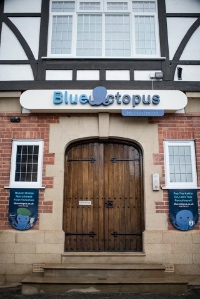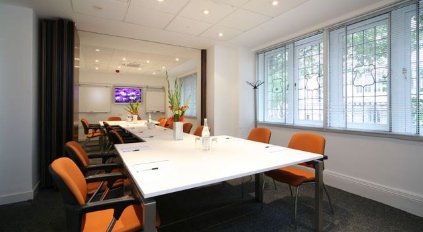by Paul Breton, Marketing Executive with online recruitment specialists Blue Octopus Recruitment in Otley, West Yorkshire, United Kingdom. He blogs on working life, human resources and the world of recruitment.
Recruitment companies regularly turn to flexible workspace, given their need for a professional yet easily-scalable workplace environment.
To help business centre operators understand more about this important client base, we caught up with Paul Breton from online recruitment company Blue Octopus. Here, he tells us exactly what workspace operators need to do to attract and keep companies in the recruitment sector.
Guest Post: What Recruitment Companies Look for in an Office Space
Paul Breton | Blue Octopus Recruitment
There’s not really any such thing as a generic office space that’s truly fit for all purposes. While “one size fits all” solutions do exist, every industry has subtly different needs that deserve to be reflected in the design, size, furnishings, location and more.
Coming from a background in recruitment, I can attest that there are certain features that users of the space, whether employees, clients or candidates, find to really work to their advantage… and these are features you might not find in the offices of, say, a publishing or a bookkeeping firm.
Most of the physical elements that make the office a good place to work can be switched out whenever the client wants. Some new artwork or a change in lighting fixtures come to mind. But office managers know the best time to make decisions about office design is actually when renting or buying the space in the first place, because there are some things that just aren’t so easily changed.
And so whether they’re scoping out a satellite office or renting their very first space, here are just a few of the things savvy recruitment managers like to look for to help their colleagues, their clients and ultimately their business:
Room to grow
The recruitment business is booming, particularly with the job market picking up and with new methods of reaching candidates being developed all the time.
All things being well, a recruitment company will probably expand over the months and years to come. That means that while their spacious new digs may feel a little empty once they open for business, they should hopefully have the space for significant growth before the need to move on arises.
Waiting and conference areas
Many businesses can make do with just a couple of meeting rooms and maybe one waiting area. In all but the smallest recruitment agencies that usually won’t be enough. Recruiters do have a need for these spaces, as they may see candidates looking for career advice in their office as well as clients, meaning the front door gets a lot of use.
Accessible waiting rooms with touches such as fish tanks or drinks machines are always welcome touches.
 Friendly to visitors
Friendly to visitors
As I’ve just indicated, layout is important in an office that sees a lot of visitors. It doesn’t take long for a new employee to learn their way around the workplace, but for visitors it’s a different story. It’s common for people to drop by just once, for less than an hour, and they have to be sure they know where they’re going when not accompanied. A natural layout, where waiting areas are easy to find on entering the workplace, is a good start.
For an easy demonstration of how to achieve this, think of a public space that is specifically designed to be easily navigated by the uninitiated. Public buildings are typically more open and spacious than private offices, so a recruitment professional seeking the perfect space will have the same ideals in mind. (Signposting helps too, but this will be the client’s prerogative.)
Open plan or closed off?
Recruiters differ on whether an open plan office or individual offices are the better idea for staff. The profession involves a great deal of collaboration with colleagues which would seem to be more suited to an open layout. However some consultants prefer to be more isolated so that they are not distracted while on the phone.
There is some flexibility with layout, as partitions are easy to introduce at a later date. But opening up a space with many walls is not so feasible, so it may be best to ask recruiters in individual instances about the kind of layout they envision for their staff.


 Dr. Gleb Tsipursky – The Office Whisperer
Dr. Gleb Tsipursky – The Office Whisperer Nirit Cohen – WorkFutures
Nirit Cohen – WorkFutures Angela Howard – Culture Expert
Angela Howard – Culture Expert Drew Jones – Design & Innovation
Drew Jones – Design & Innovation Jonathan Price – CRE & Flex Expert
Jonathan Price – CRE & Flex Expert














